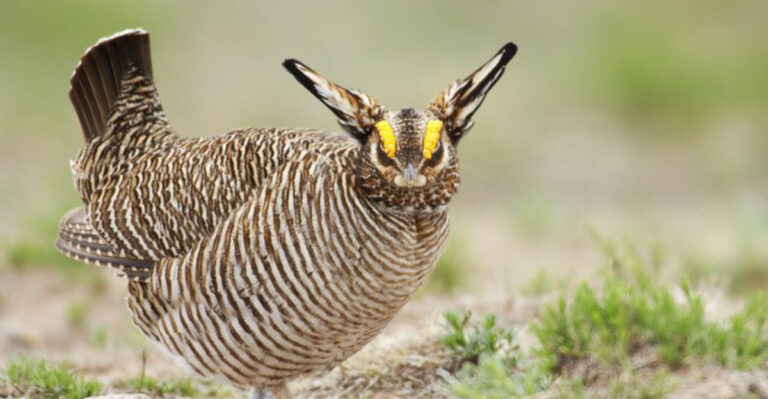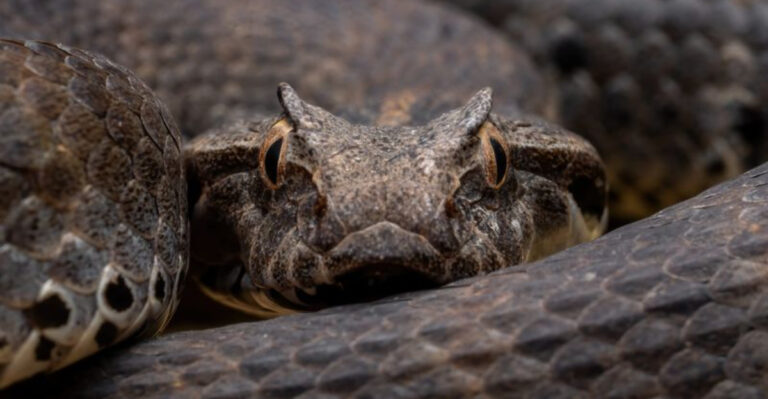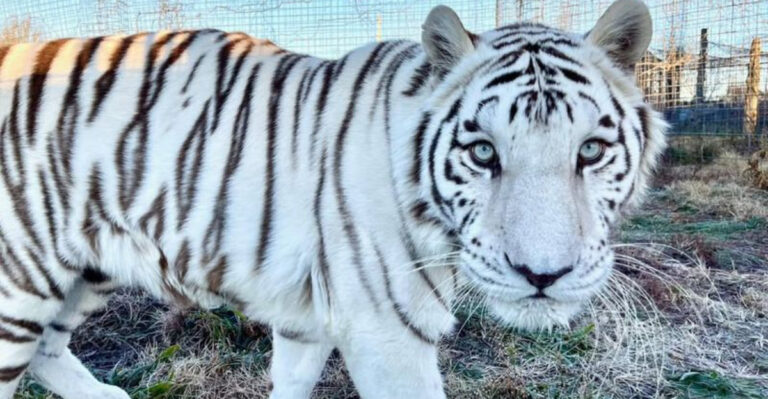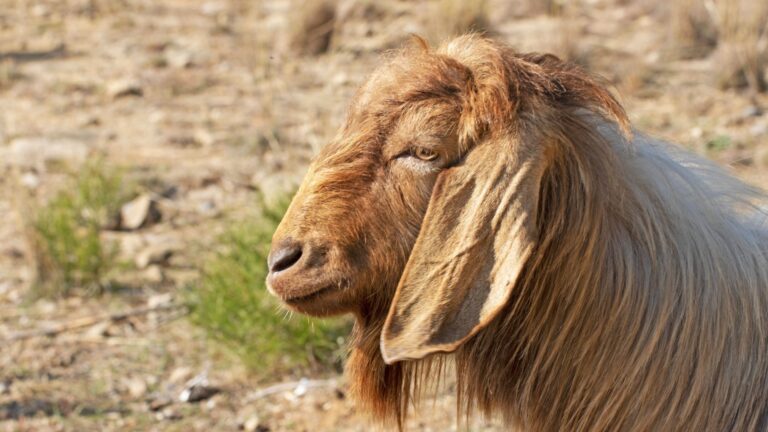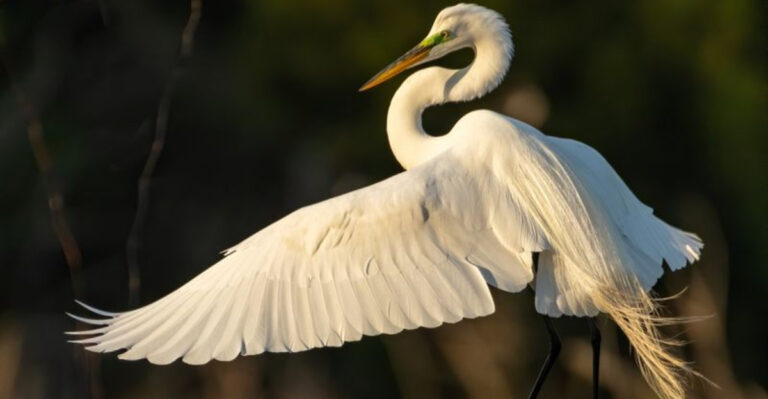The 15 Most Iconic Owls Found In North America
Mysterious and majestic, owls capture our imagination with their silent flight and haunting calls. North America is home to a remarkable variety of these nocturnal hunters, each with unique adaptations and behaviors.
From tiny screech owls to massive great horned owls, these feathered predators play crucial roles in controlling rodent populations while enchanting wildlife enthusiasts across the continent.
1. Great Horned Owl
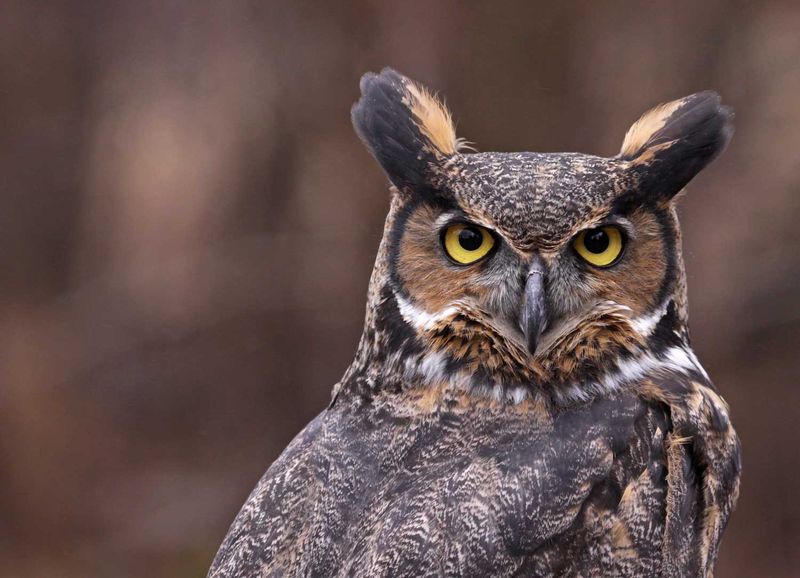
Yellow eyes gleam in the darkness as this fierce predator scans for prey. The signature ear tufts aren’t actually ears at all, but feathers that help break up the owl’s silhouette against trees.
Weighing up to 3.5 pounds with a wingspan reaching 5 feet, these powerful birds can take down prey larger than themselves, including skunks, raccoons, and other owls!
2. Barred Owl
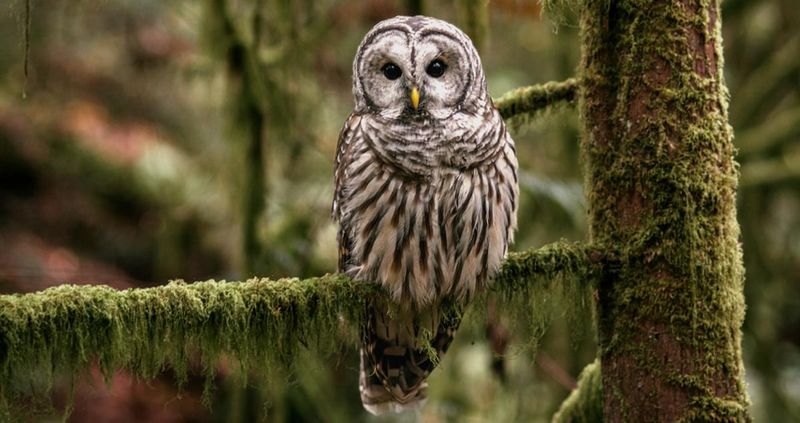
Famous for its distinctive “who-cooks-for-you” call echoing through eastern forests, this medium-sized owl lacks ear tufts, giving it a round-headed appearance. Dark eyes set against facial disks create an almost surprised expression.
Chocolate brown vertical bars across its chest inspired the name. These adaptable hunters thrive in mature forests but have expanded westward in recent decades, concerning conservationists.
3. Snowy Owl
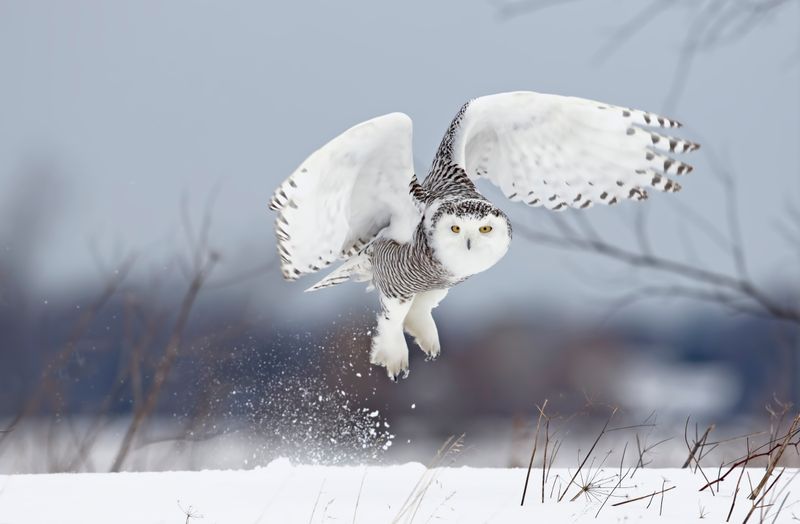
Arctic royalty visits the northern United States during winter irruptions. Males become increasingly white with age, while females retain more dark barring throughout their lives.
Unlike most owls, these magnificent birds hunt during daylight hours across open tundra and fields. Harry Potter fans recognize them as Hedwig! When food becomes scarce up north, they fly south in spectacular migrations that delight birdwatchers.
4. Eastern Screech Owl
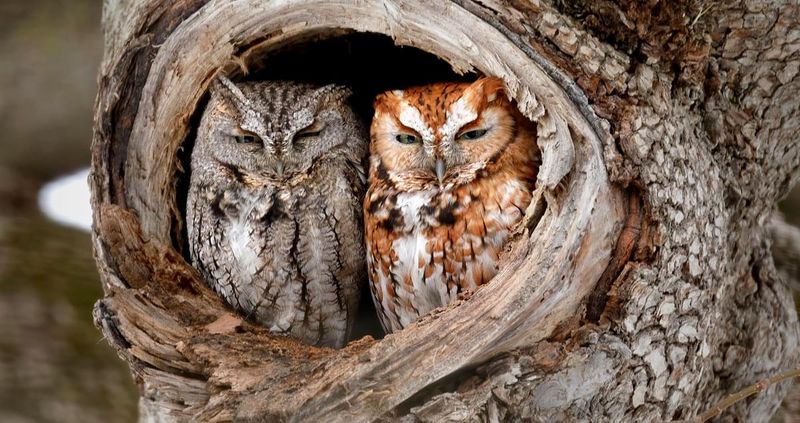
Master of camouflage, this small owl comes in two color morphs: rusty red or silvery gray. Their bark-like pattern helps them disappear against tree trunks when they squeeze into cavities during daylight hours.
Don’t let the name fool you! Their call isn’t a screech but rather a descending whinny or soft trill. Suburban adaptable, they’ll happily nest in backyard boxes while controlling garden pests.
5. Western Screech Owl
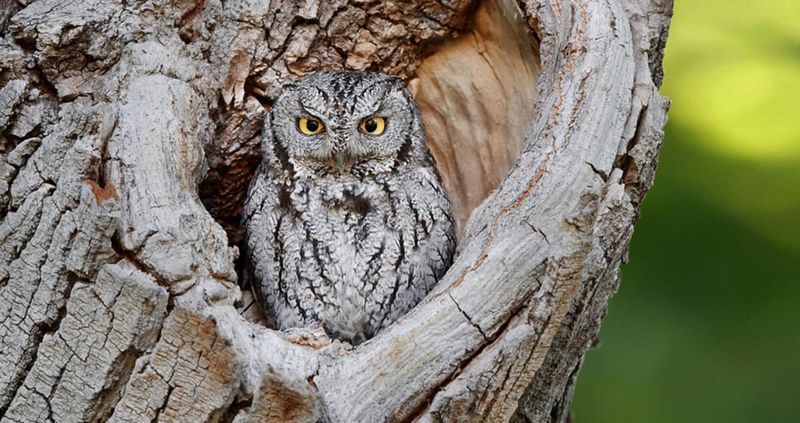
Slightly smaller than its eastern cousin, this pint-sized predator rules western forests and deserts with surprising ferocity. Standing barely 8 inches tall, it can take down prey nearly its own size.
Vertical stripes on its belly help it blend perfectly against tree bark. Unlike many owl species, western screech owls often form long-term pair bonds, staying with the same mate for years in their favorite territory.
6. Burrowing Owl
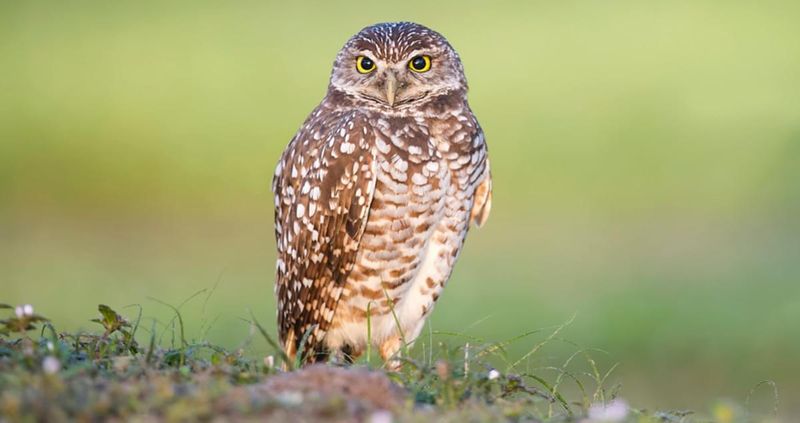
Breaking all owl stereotypes, these quirky characters live underground in prairie dog towns and open grasslands. Long legs help them run after insects across the ground during daylight hours!
Standing tall at burrow entrances, they bob comically when alarmed. Conservation challenges mount as development eliminates their habitat. Some clever individuals line their burrows with cow dung to attract dung beetles – a favorite meal.
7. Northern Saw-whet Owl
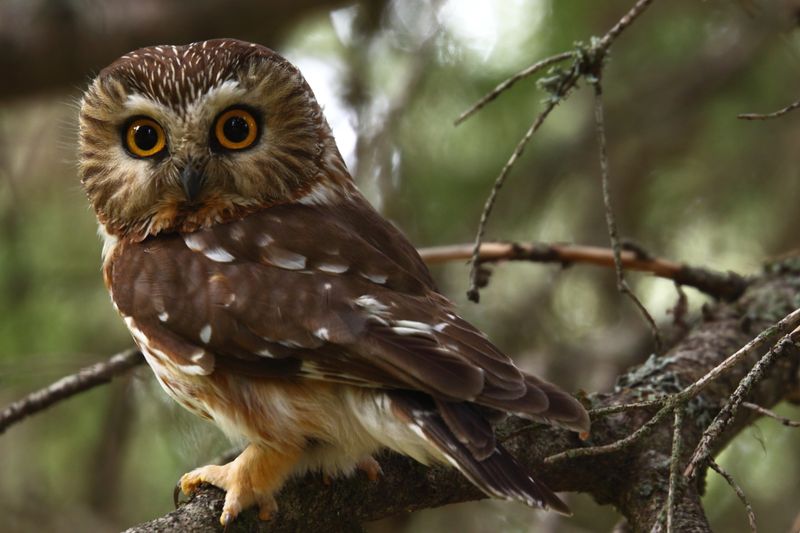
Palm-sized and utterly adorable, these diminutive hunters weigh less than a baseball. Their oversized head and cat-like facial features make them favorites among birdwatchers lucky enough to spot one.
Named for their call resembling a saw being sharpened, they’re notoriously difficult to find. Specialized migration studies reveal surprising numbers passing through each autumn. Their tiny size doesn’t stop them from taking down mice and voles with deadly precision.
8. Barn Owl
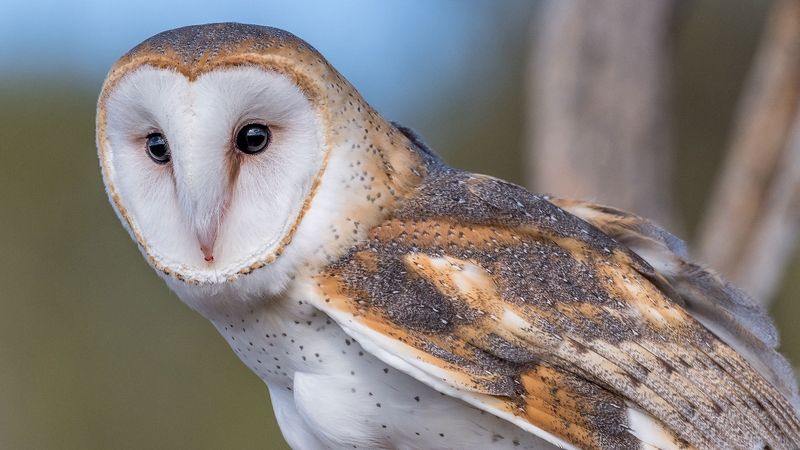
Ghost-like white face and heart-shaped facial disk make this owl instantly recognizable worldwide. Flying silently through the night on pale wings, they’ve inspired countless folklore tales and superstitions.
Extraordinary hearing allows them to catch mice in complete darkness using sound alone! Their screeching calls have frightened many a nighttime traveler. Farmers welcome these efficient rodent controllers that can consume 1,000+ mice annually.
9. Short-eared Owl
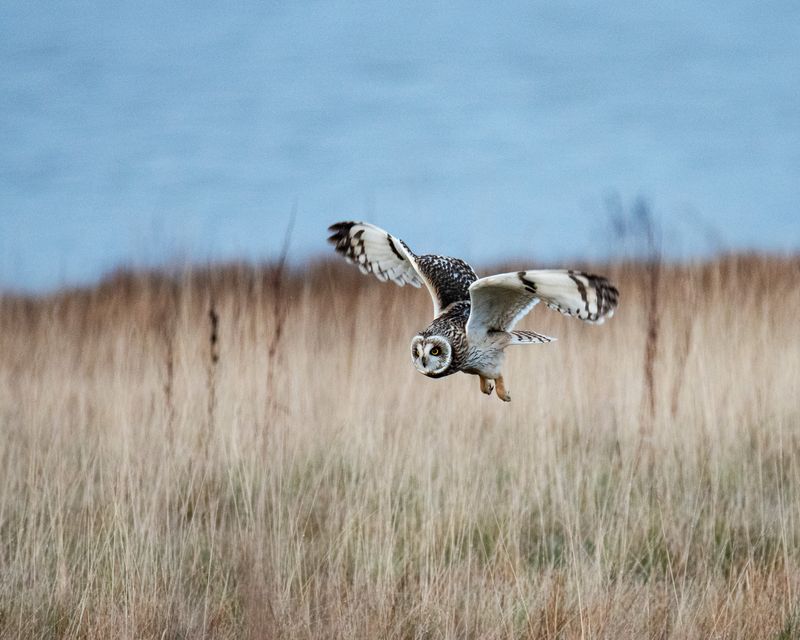
Swooping low over grasslands at dusk, these medium-sized owls put on spectacular aerial displays during courtship season. Their “ears” are barely visible tufts that often lie flat against their head.
Unlike most owls, they build ground nests in open country. Watch for their moth-like flight pattern with deep, floppy wingbeats. Population declines follow grassland habitat loss, making sightings increasingly precious to birders across the continent.
10. Long-eared Owl
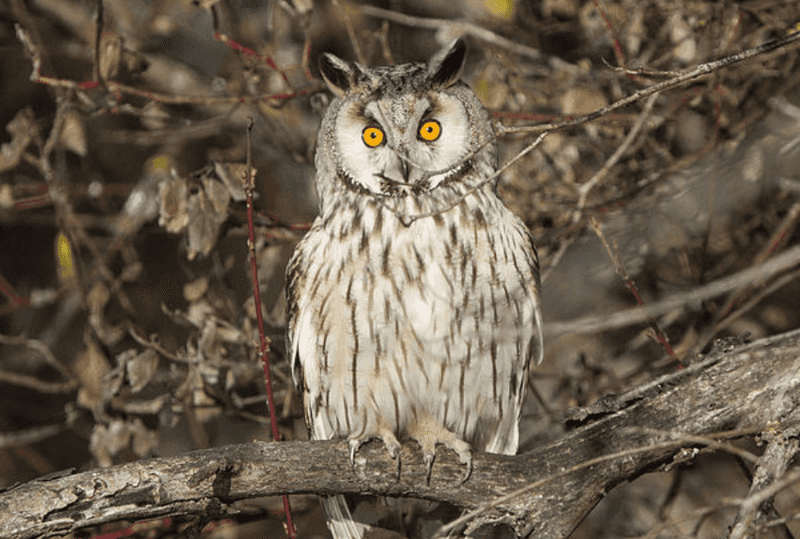
Secretive forest dwellers with dramatic orange facial disks and tall ear tufts that seem permanently surprised. Despite their name, their actual ears are hidden beneath feathers, while the tufts serve as camouflage.
During winter, they form communal roosts where dozens gather in single trees. Their eerie, low-pitched hoots carry through pine forests on spring nights. Slender bodies and cryptic coloration make them nearly invisible when pressed against tree trunks.
11. Northern Hawk Owl

Half owl, half hawk in behavior, these unique birds break the nocturnal rules. Hunting boldly during daylight from exposed perches, they scan for prey with hawk-like intensity.
Lacking the facial disk of typical owls, their streamlined appearance helps them achieve impressive speeds in flight. Northern forests occasionally witness these Canadian visitors pushing southward during winter food shortages. Their long tails and upright posture distinguish them from other owls.
12. Spotted Owl
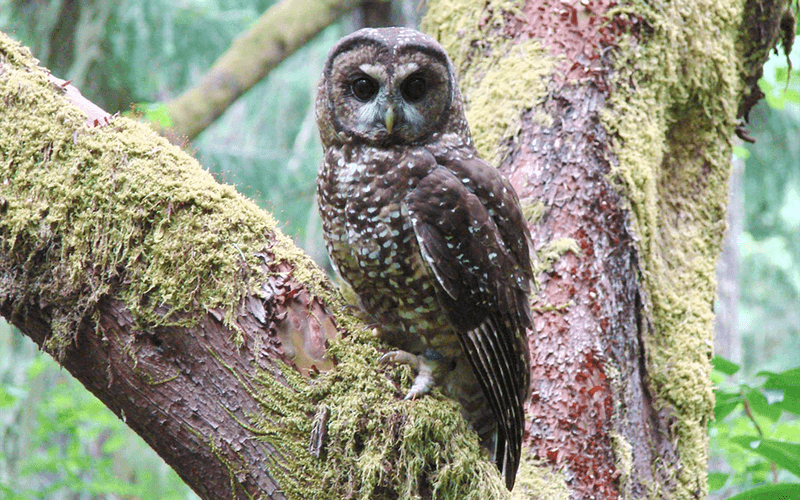
Center of the Northwest’s timber wars, this chocolate-brown forest phantom sparked fierce conservation battles. Old-growth dependent, their declining numbers highlight ecosystem health challenges in ancient forests.
White spots dapple their dark plumage like stars in a night sky. Territorial hoots help mates locate each other through dense canopy. Competition from the aggressive barred owl further threatens their future, creating complex conservation dilemmas for wildlife managers.
13. Great Gray Owl
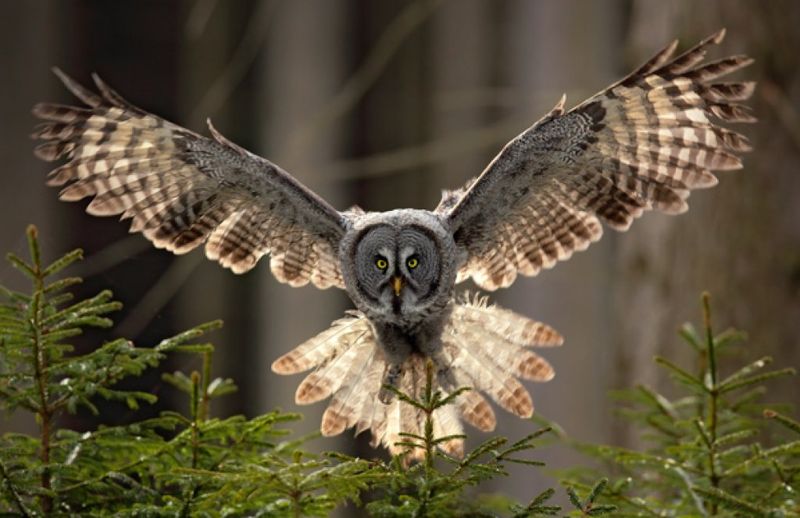
North America’s tallest owl creates an unforgettable silhouette with its massive facial disk and lack of ear tufts. Size can be deceiving – their fluffy plumage hides a surprisingly small body beneath.
Capable of hearing mice moving beneath 18 inches of snow, they plunge headfirst into drifts to catch hidden prey. Boreal forests and mountain meadows form their preferred hunting grounds. Despite their impressive 5-foot wingspan, they weigh less than most ravens!
14. Elf Owl
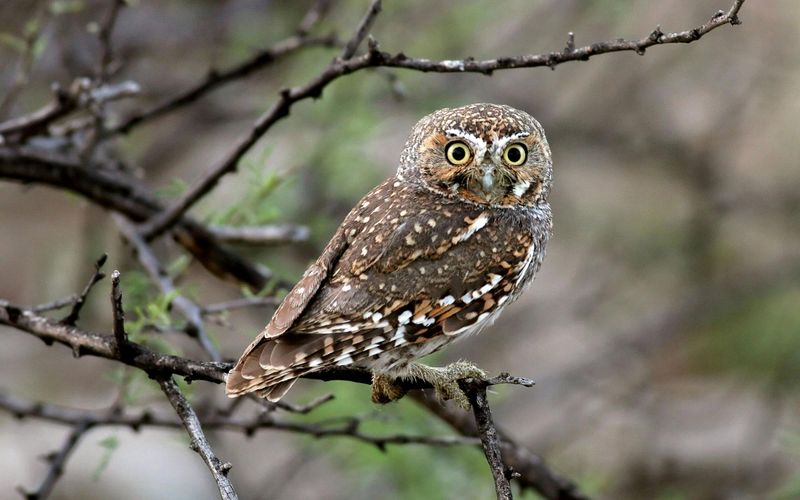
Weighing less than a golf ball, North America’s tiniest owl packs attitude into a sparrow-sized package. Saguaro cacti serve as favorite nesting spots, where they claim abandoned woodpecker holes as desert penthouses.
Summer nights in the Southwest echo with their yipping calls reminiscent of excited puppies. Despite their diminutive size, they fearlessly mob much larger predators that threaten their territory. Migration takes them to Mexico each winter.
15. Flammulated Owl
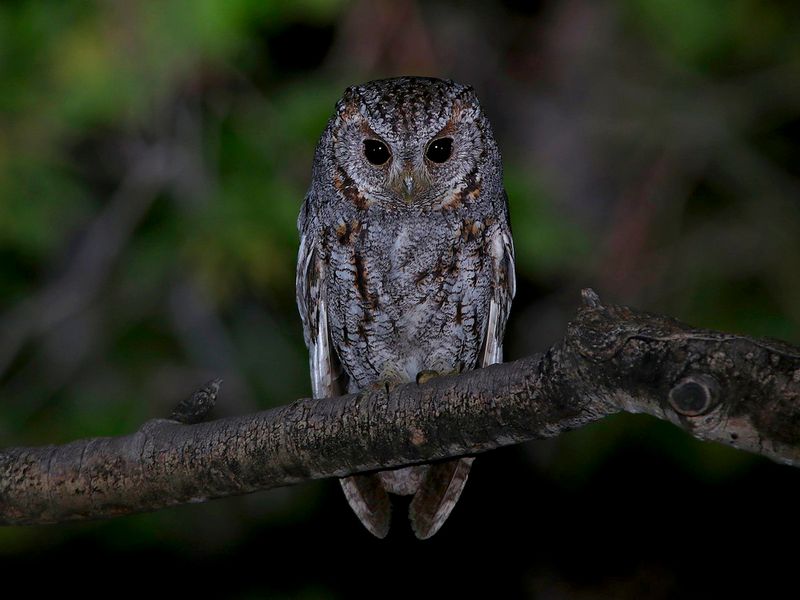
Named for flame-like markings on their faces, these secretive mountain dwellers weigh less than a deck of cards. Dark eyes set them apart from most owls, which typically have yellow or orange irises.
Insect specialists, they perform aerial acrobatics catching moths in mountain forests. Their low, ventriloquial hoots confuse listeners trying to locate them. Despite being widespread in western mountains, few people ever see these masters of camouflage during their summer breeding season.

